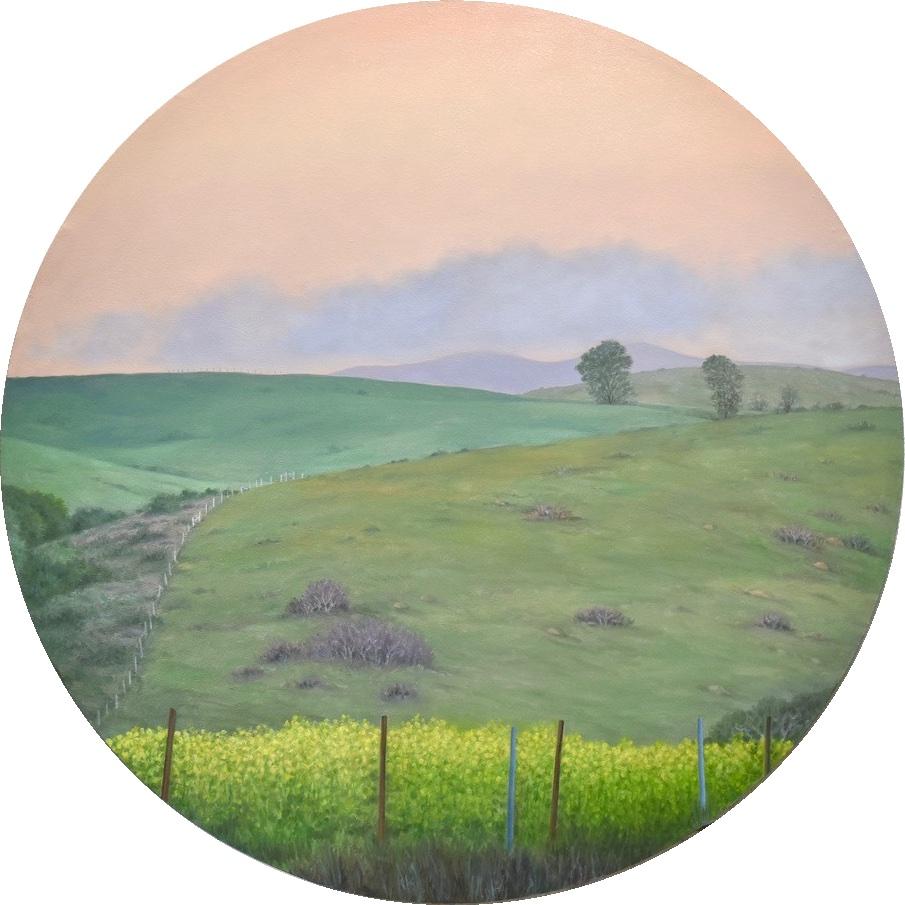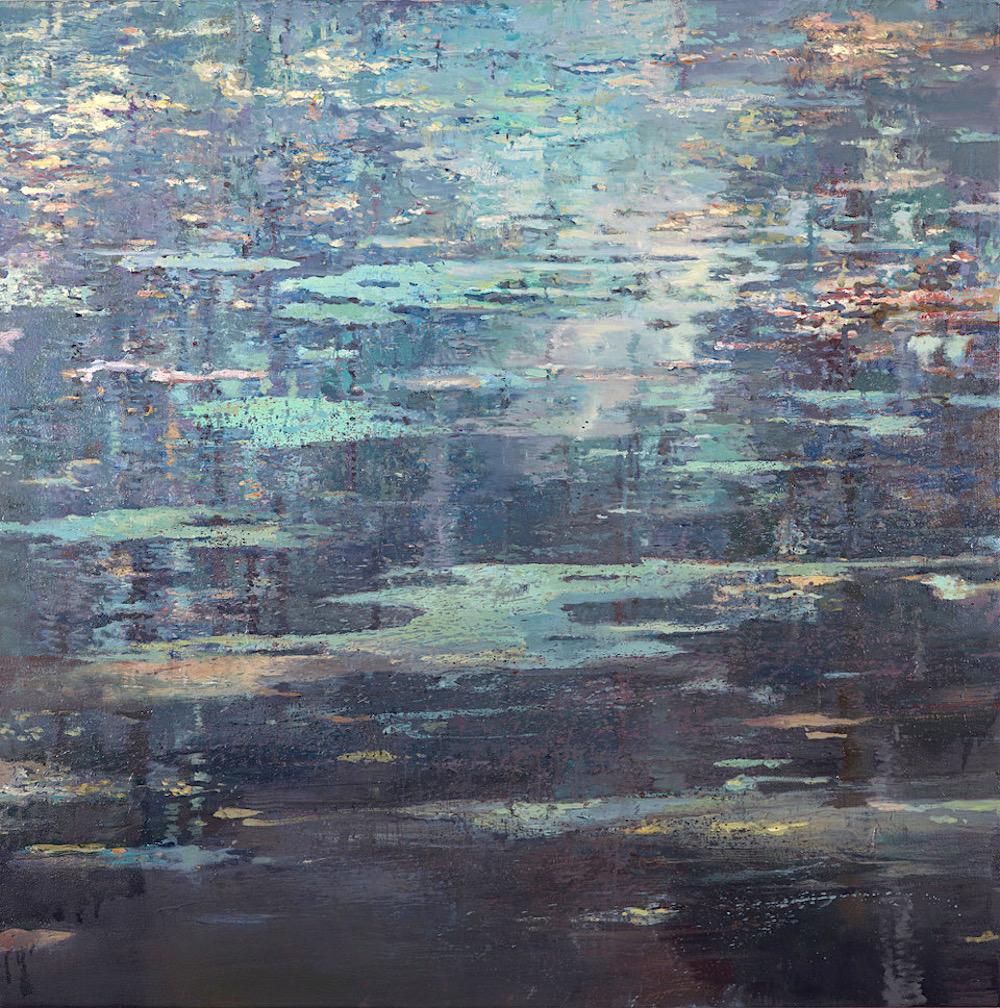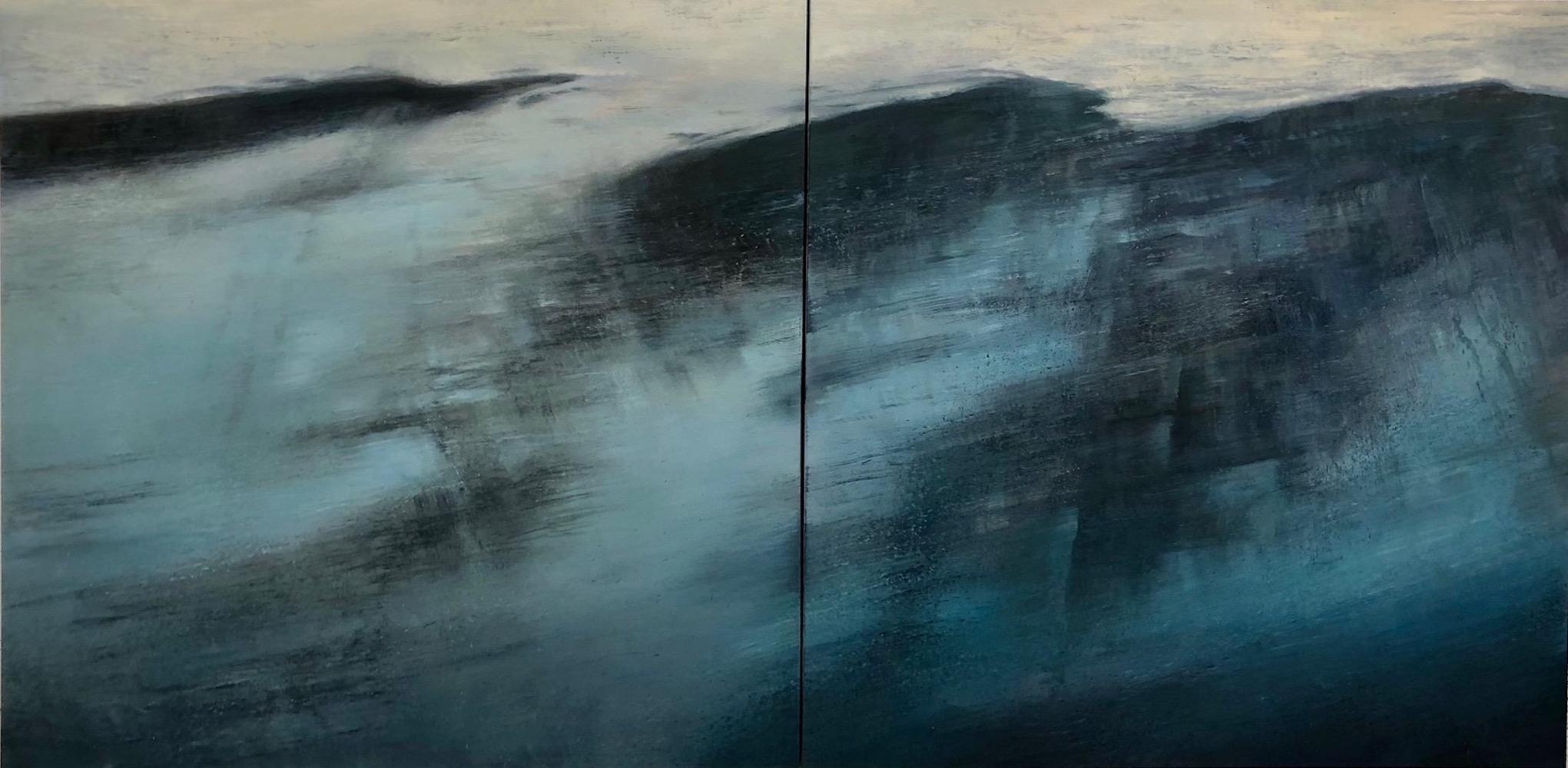Items Similar to "Colonial Sand and Stone Company, New York, " Industrial WPA Scene, Precisionist
Want more images or videos?
Request additional images or videos from the seller
1 of 9
William Sharp"Colonial Sand and Stone Company, New York, " Industrial WPA Scene, Precisionist
About the Item
William Sharp (1900 - 1961)
Factory on the River
Oil on canvas
20 1/2 x 28 1/2 inches
Initialed lower left: WS
Provenance:
Estate of the artist
Private Collection, New York
Swann Auction Galleries, American Art, June 13, 2019, Lot 178
Private Collection, New York
Colonial Sand and Stone Co., founded by Generoso Pope, was once the country’s largest sand and gravel business, providing the concrete for much of New York City’s skyline, including the Empire State Building, Rockefeller Center, Radio City Music Hall, airports and subways.
William Sharp was born on June 13, 1900, in Lemberg, Austria, where he attended college and the Academy for Arts and Industry. He later studied in Kraków, Poland, and in Berlin and Munich, Germany. Sharp began his career as a designer of stained-glass windows and as a painter of murals. He served in the German army during World War I. After the war he became a newspaper artist in Berlin and a well-known etcher.
Sharp drew political cartoons that were bitterly critical of the growing Nazi movement. As the influence of National Socialism intensified, he began to contribute drawings, under a pseudonym, to publications that were hostile to Hitler. After Hitler assumed power, Sharp was confronted with these drawings and told that he would be sent to a concentration camp. However, in 1934, he escaped to the United States.
His first newspaper assignment in America was making courtroom sketches for The New York Mirror at the trial of Bruno R. Hauptmann for the kidnapping of the Lindbergh baby. As a staff artist at Esquire, where he continued to produce political cartoons, Sharp also illustrated stories by Ernest Hemingway and Thomas Mann.
He was a longtime contributor to The New York Times Magazine and also worked for Life, Colliers, Coronet, and The New York Post. Sharp also did book illustrations for several leading publishers, with Dickens' Old Curiosity Shop for Heritage Press being his first assignment. He illustrated several books for limited editions, including The Diary of Samuel Pepys in 10 volumes. Sharp published several portfolios of etchings and lithographs about the legal and medical professions.
Sharp's precisionist work is represented in many museums, including the Metropolitan Museum of Art, the Queens Museum, the Library of Congress, the Carnegie Institute, and the New York Public Library.
William Sharp died in New York City on April 1, 1961.
- Creator:William Sharp (1900 - 1961)
- Dimensions:Height: 20 in (50.8 cm)Width: 28 in (71.12 cm)
- Medium:
- Movement & Style:
- Period:
- Condition:Excellent.
- Gallery Location:New York, NY
- Reference Number:1stDibs: LU184129906802
About the Seller
5.0
Platinum Seller
These expertly vetted sellers are 1stDibs' most experienced sellers and are rated highest by our customers.
Established in 2021
1stDibs seller since 2022
59 sales on 1stDibs
Typical response time: <1 hour
- ShippingRetrieving quote...Ships From: Larchmont, NY
- Return PolicyA return for this item may be initiated within 3 days of delivery.
More From This SellerView All
- "Factory on the River, " Modernist and Precisionist WPA Industrial New York SceneBy William SharpLocated in New York, NYWilliam Sharp (1900 - 1961) Factory on the River Oil on canvas 17 1/2 x 23 1/4 inches Initialed lower right: WS Provenance: Estate of the artist Private Collection, New York Swann Auction Galleries, American Art, June 13, 2019, Lot 178 William Sharp was born on June 13, 1900, in Lemberg, Austria, where he attended college and the Academy for Arts and Industry. He later studied in Kraków, Poland, and in Berlin and Munich, Germany. Sharp began his career as a designer of stained-glass windows and as a painter of murals. He served in the German army during World War I. After the war he became a newspaper artist in Berlin and a well-known etcher. Sharp drew political cartoons that were bitterly critical of the growing Nazi movement. As the influence of National Socialism intensified, he began to contribute drawings, under a pseudonym, to publications that were hostile to Hitler. After Hitler assumed power, Sharp was confronted with these drawings and told that he would be sent to a concentration camp. However, in 1934, he escaped to the United States. His first newspaper assignment in America was making courtroom sketches for The New York Mirror...Category
Mid-20th Century American Realist Landscape Paintings
MaterialsCanvas, Paint, Oil
- "Colorado Landscape, " Western Precisionist Regionalism American Scene PaintingBy William SandersonLocated in New York, NYReminiscent of an Edward Hopper or Andrew Wyeth scene, or even Charles Demuth with its cubist elements. William Sanderson (1905 - 1990) Colorado Landscape Oil on canvas 23 1/2 x 31 1/2 inches Signed lower right: Sanderson Born in Dubbeln, near Riga, Latvia in 1905, his personal journey from Czarist Russia, to New York City, and finally to Colorado, is one of remarkable courage and perseverance. Sanderson exhibited in numerous solo and group exhibitions throughout Colorado and the West between 1945 and 1985, and he was voted one of Colorado's influential artists of the 20th Century. Sanderson's paintings are represented in many museums and are sought after by collectors who appreciate his composition and precise use of color. The year 2005 marked the Centennial of Sanderson's birth, and he is now recognized as a major contributor to the development of modern art in Colorado. As a student at the National Academy of Design in 1927, Sanderson exemplifies an individual dedicated to creativity and the life-long passion for art. Known primarily as a Colorado artist, Sanderson first developed his skills as a graphic illustrator in New York City, and his work has appeared in numerous magazines, including New Yorker and New Masses. Notable book illustrations include The Jumping Off Place - 1929, by Marion Hurd McNeely, Jews Without Money - 1930, by Michael Gold...Category
Mid-20th Century American Modern Landscape Paintings
MaterialsCanvas, Oil
- "Harvard vs Yale" Charles Green Shaw, Football, Ivy League Sports, AbstractBy Charles Green ShawLocated in New York, NYCharles Green Shaw Harvard vs. Yale, 1944 Signed and dated on the reverse Oil on canvasboard 9 x 12 inches Provenance: Harvey and Francois Rambach, New Jersey Private Collection, California Washburn Gallery, New York D. Wigmore Fine Art, New York Private Collection, New York Charles Green Shaw, born into a wealthy New York family, began painting when he was in his mid-thirties. A 1914 graduate of Yale, Shaw also completed a year of architectural studies at Columbia University. During the 1920s Shaw enjoyed a successful career as a freelance writer for The New Yorker, Smart Set and Vanity Fair, chronicling the life of the theater and café society. In addition to penning insightful articles, Shaw was a poet, novelist and journalist. In 1927 he began to take a serious interest in art and attended Thomas Hart Benton's class at the Art Students League briefly in New York. He also studied privately with George Luks, who became a good friend. Once he had dedicated himself to non-traditional painting, Shaw's writing ability made him a potent defender of abstract art. After initial study with Benton and Luks, Shaw continued his artistic education in Paris by visiting numerous museums and galleries. From 1930 to 1932 Shaw's paintings evolved from a style imitative of Cubism to one directly inspired by it, though simplified and more purely geometric. Returning to the United States in 1933, Shaw began a series of abstracted cityscapes of skyscrapers he called Manhattan Motifs which evolved into his most famous works, the shaped canvases he called Plastic Polygons. The 1930s were productive years for Shaw. He showed his paintings in numerous group exhibitions, both in New York and abroad, and was also given several one-man exhibitions. Shaw had his first one-man exhibition at the Valentine Dudensing Gallery in New York in 1934, which included 25 Manhattan Motif paintings and 8 abstract works. In the spring of 1935 Shaw was introduced to Albert Gallatin and George L.K. Morris. Gallatin was so impressed with Shaw's work, he broke a policy against solo exhibitions at his museum, the Gallery of Living Art, and offered Shaw an exhibition there. In the summer of 1935 Shaw traveled to Paris with Gallatin and Morris who provided introductions to many great painters. Shaw regularly spent time with John Ferren and Jean Hélion. The following year Gallatin organized an exhibition called Five Contemporary American Concretionists at the Reinhardt Gallery that included Shaw, Ferren, and Morris, Alexander Calder, and Charles Biederman...Category
1940s Abstract Geometric Landscape Paintings
MaterialsOil, Board
- "Hiddensee, Herbst (Autumn)" Hans Hofmann, Modern German Abstract LandscapeBy Hans HofmannLocated in New York, NYHans Hofmann Hiddensee, Herbst (Autumn), 1927 Signed with initials and dated lower left; titled on the reverse Oil on paper 18 x 22 inches Provenance: John Adams Fine Art, London Pr...Category
1920s Modern Landscape Paintings
MaterialsPaper, Oil
- "Tabac" Charles Green Shaw, Tobacco, Smoking, Park Ave Cubist, AAABy Charles Green ShawLocated in New York, NYCharles Green Shaw Tabac, circa 1935 Signed on the reverse Oil on canvasboard 5 3/4 x 8 3/4 inches Provenance: Washburn Gallery, New York, 1982 Private Collection (acquired from the above) Christie's, The Collector, October 20, 2021, Lot 307 Private Collection, Scarsdale, New York (acquired directly from the above) Literature: Hilton Kramer, "Charles Shaw: In the Minimal Tradition," New York Times, February 21, 1982, Section 2, p. 25. Charles Green Shaw was born in 1892 to a wealthy New York family. He lost both his parents at a very young age; his mother died when he was just three years old. Despite the early loss of his parents, Shaw lived the whimsical life of a New York socialite. As a beneficiary to an inheritance based in part upon the Woolworth fortune, he was brought up surrounded by the well-bred, well-groomed and well-moneyed citizens of New York’s elite social class. His social status as an adolescent was cultivated while spending summers in Newport and attending Christmas balls at Mrs. W.K. Vanderbilt’s. At age six, Shaw began to take an interest in drawing, and by nine, he was known to have a fondness for sketching historical costumes. After graduating from Yale University in 1914, Shaw spent a year studying at Columbia University’s School of Architecture. Subsequently he served for eighteen months as a Lieutenant in World War I. After his service, Shaw returned to New York and tried his hand as a businessman selling real estate, but his attempt was short lived. In the early 1920s, Shaw began his career as a journalist and novelist. He achieved professional success, writing consistently for magazines such as The New Yorker, Vanity Fair and The Smart Set. Shaw’s writing was a record of his approvals and disapprovals of the social crowd to which he belonged. His profession along with his social pedigree, brought him in contact with a number of the most significant figures of the 1920s such as, F. Scott Fitzgerald, Sinclair Lewis, George Gershwin, George Jean Nathan and the American artist George Luks. Some of his profiles included celebrity caricatures used as illustrations, these were the publics’ first look at Shaw’s artistic ability. In 1928, a collection of Shaw’s articles and interviews were published in one volume titled, The Low Down. Just previous to the stock market crash and the end of the Jazz Age, Shaw left New York and traveled to Paris and London. He arrived in Paris in 1929. In an autobiographical note Shaw suggests it was on this trip when he first began to paint seriously. London also acted as a great source of motivation for the budding artist. He began to sketch everyday in St. James’s Park, making large pastels of its vistas in the style of Cezanne. When he returned to New York in 1932, Shaw considered himself a painter. Success for Shaw came quickly with his first solo exhibition mounted at the Valentine Gallery in 1934. The following year Albert Eugene Gallatin included works by the artist in an unprecedented solo exhibition at his Gallery of Living Art at New York University. Shaw further cemented his reputation as an artist through his association and friendship with fellow abstract artists Morris and Gallatin. The trio soon was regarded as ‘the Park Avenue Cubists’. As a founding member of the American Abstract Artists, Shaw became an impassioned defender of the style. His 1938 essay in the American Abstract Artists yearbook, “A Word to the Objector”, acted as a defense against those who failed to see the illustrative quality of abstract art and scolded those who disregarded American artists as serious Abstractionists. He was also an influential force at the Museum of Modern Art, where he sat on the Advisory Board from 1936 to 1941. In the later years of Shaw’s life he continued to produce abstract paintings, yet in a more private manner. He was known to be a reserved man— a ‘gentleman’; not much is known about his personal life in these later years. During this time he maintained his career as a writer, publishing the well-known children’s book, It Looked Like Spilt Milk in 1940 and two books of poems in 1959 and 1962. In 1974, Shaw died...Category
1930s Cubist Landscape Paintings
MaterialsOil, Board
- "Midsummer Night" Gerome Kamrowski, Color Field, Abstract ExpressionismBy Gerome KamrowskiLocated in New York, NYGerome Kamrowski Midsummer Night, 1973 Signed upper left Acrylic on canvas 16 x 20 inches Gerome Kamrowski was born in Warren, Minnesota, on January 19, 1914. In 1932 he enrolled in...Category
1970s Abstract Expressionist Abstract Paintings
MaterialsFoam, Mixed Media, Acrylic, Board
You May Also Like
- Active SkyBy Willard DixonLocated in Burlingame, CAWillard Dixon is a celebrated American Realist artist whose skies bridge realism with abstraction, as he so beautifully depicts sweeping skies, capturing their light and atmosphere on his canvases created with oil paint. This circular canvas is 4 feet across and tall, and is one of the smallest that the he has created. Beautiful over a bed, or dining room. Proudly presented by Andra Norris...Category
21st Century and Contemporary American Realist Landscape Paintings
MaterialsCanvas, Oil
- Landscape with Mustard Flowers - 48 inch circular canvasBy Willard DixonLocated in Burlingame, CALandscape painting with mustard flowers under a warm sky. Created on a circular canvas that is 48 inches across (4 feet in diameter.) The original work of art ...Category
21st Century and Contemporary American Realist Landscape Paintings
MaterialsCanvas, Oil
- BabylonBy Gail Chase-BienLocated in Burlingame, CAGail Chase Bien paints thinly layered oil on linen over extended periods (from months to years) to complete a single work of art. Taking cues from nature’s extraordinary visual offer...Category
21st Century and Contemporary American Realist Landscape Paintings
MaterialsCanvas, Oil
- Letter to the Sixth Poet (diptych)By Gail Chase-BienLocated in Burlingame, CAGail Chase Bien paints thinly layered oil on linen over extended periods (from months to years) to complete a single work of art. Taking cues from nature’s extraordinary visual offer...Category
21st Century and Contemporary American Realist Landscape Paintings
MaterialsCanvas, Oil
- Ten Mile Beach (diptych)By Gail Chase-BienLocated in Burlingame, CAGail Chase Bien paints thinly layered oil on linen over extended periods (from months to years) to complete a single work of art. Taking cues from nature’s extraordinary visual offerings — specifically, the play of light as it touches upon water and earth — her nature-inspired works bridge realism and abstraction, and they convey a thin veneer of the of human spirit. Complex, rich, and slow in the making, the paintings, with their serene simplicity, are intended to be viewed and enjoyed over time. Ten Mile Beach...Category
21st Century and Contemporary American Realist Landscape Paintings
MaterialsCanvas, Oil
- Turbulent Sky - 61 x 61 inches, circular canvasBy Willard DixonLocated in Burlingame, CABlue sky painting with sunlight shining through turbulent clouds with a warm hue. Created with a calm and etherial palette of blue, white, and lavender. Painted on a 5 foot circular canvas...Category
21st Century and Contemporary American Realist Landscape Paintings
MaterialsCanvas, Oil
Recently Viewed
View AllMore Ways To Browse
New York Company
Designer Vintage New York
New York Etching
Shopping In New York
New York City Lithograph
New York Public Library
New Retro Illustration
Shopping In New York City
Etching New York City
New York Vintage Shops
New Volumes
New Colonial
German Army
Country Colonial
Power Company
Vintage Estate Company
Sand Stone
Sand Glass Art





